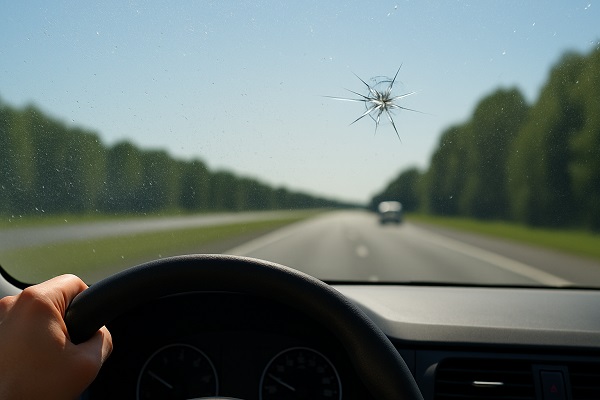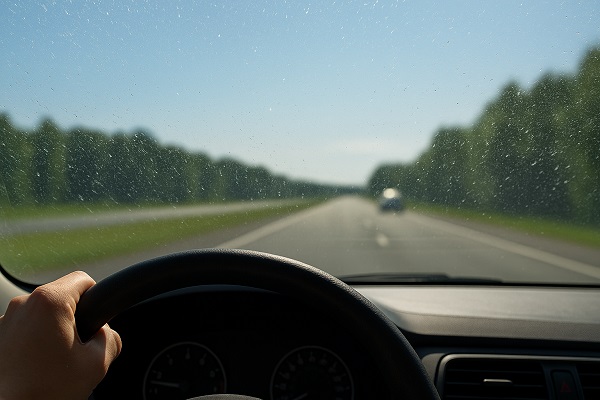Windshield pitting is a common but often overlooked form of glass damage that occurs when small particles—such as sand, dust, and debris—strike the windshield over time, creating tiny craters or pits on the surface. This subtle yet progressive deterioration can affect visibility, structural integrity, and overall driving safety.
Understanding what causes windshield pitting, how to recognize it, and when it’s time for replacement is crucial for maintaining your vehicle’s safety and comfort.
What Causes Windshield Pitting?
Windshield pitting develops gradually due to constant exposure to road debris and environmental factors. Unlike cracks or chips, pits are usually shallow but widespread and accumulate over time.
Common Causes of Pitting:
- High-speed driving: Traveling at high speeds increases the impact force of debris hitting the windshield.
- Construction zones: These areas often have loose gravel, sand, and dust, which can be flung at your glass.
- Weather exposure: Wind, dust storms, and hail can contribute to pitting.
- Aging glass: Over time, the constant assault of microscopic particles weakens the surface.
Even vehicles that are well-maintained and driven carefully can develop windshield pitting after prolonged use, especially in harsh driving environments.
How to Identify Windshield Pitting
Pitting can be hard to detect initially because the damage is often subtle and widespread rather than focused like a crack or chip.
Signs You May Have Pitted Glass:
- Glare and halos: Noticing glare from headlights or sunlight, especially at dawn or dusk.
- Reduced visibility: Difficulty seeing clearly through the windshield under certain lighting conditions.
- Rough surface: If you run your fingers across the windshield, it may feel uneven or gritty.
- Wiper issues: Windshield wipers may not make full contact or may streak more frequently.
It’s easy to overlook pitting until it starts interfering with driving comfort or visibility, which is why periodic windshield inspections are recommended.
How Is Windshield Pitting Different from Cracks or Chips?

Pits are different from cracks or chips in several ways:
- Size and depth: Pits are typically very shallow and spread out, whereas cracks and chips are more localized and deeper.
- Cause: Pitting is caused by repeated small impacts over time; cracks and chips usually result from one significant event.
- Repairability: Pitting cannot be repaired in the same way as chips or cracks. Most pits are too shallow for resin filling and too numerous to address individually.
Understanding these distinctions is important when evaluating whether your windshield can be repaired or needs to be replaced.
Why Windshield Pitting Is a Safety Hazard
While pitting might seem like a cosmetic issue, it can significantly affect your safety on the road.
Safety Concerns from Windshield Pitting:
- Impaired night driving: Glare from oncoming headlights can reduce your reaction time.
- Obstructed view: Pits scatter light, making it harder to see road hazards.
- Weakened structure: A pitted windshield is more vulnerable to cracking under pressure or temperature changes.
- Wiper inefficiency: Poor wiper performance leads to reduced visibility in rain or snow.
Driving with a pitted windshield compromises your ability to see and react quickly, which increases the risk of accidents.
When Should You Replace a Pitted Windshield?
Determining when to replace a pitted windshield depends on several factors including severity, visibility impact, and overall wear.
Replace Your Windshield If:
- Glare from sunlight or headlights makes it hard to see clearly
- The pitting is spread across the driver’s line of sight
- Visibility is noticeably reduced in rain or at night
- Pits are affecting your ADAS (Advanced Driver Assistance Systems) like lane assist or collision detection
- Your inspection failed due to glass clarity issues
There’s no DIY fix for windshield pitting. If the damage is extensive, replacement is usually the most practical solution.
What Happens If You Don’t Replace It?
Ignoring a severely pitted windshield can lead to more than just inconvenience.
- Increased accident risk: Poor visibility and glare increase the chance of collisions.
- Legal trouble: Many states have regulations requiring unobstructed vision; you could be fined.
- Higher long-term cost: Waiting too long might cause the pitted glass to crack, leading to emergency replacements at higher costs.
- Insurance complications: A damaged windshield can affect your claim during an accident, especially if it contributed to reduced visibility.
Proactive replacement can save you money, protect your vehicle, and ensure your safety.
Can You Prevent Windshield Pitting?

While you can’t completely avoid windshield pitting, you can take steps to minimize it.
Tips to Reduce Pitting:
- Maintain a safe distance: Stay back from trucks or other vehicles that kick up debris.
- Use protective coatings: Some windshield treatments help resist minor scratches and pitting.
- Avoid construction zones: When possible, take alternate routes.
- Regular cleaning: Keep the glass clean to remove abrasive particles.
- Park smart: Park in covered or shaded areas to avoid weather-related damage.
Prevention won’t eliminate the risk but can significantly extend the life of your windshield.
Will Insurance Cover Windshield Replacement Due to Pitting?
Coverage for windshield replacement depends on your auto insurance policy. Most comprehensive plans include glass coverage, but there are a few considerations.
- Comprehensive insurance typically covers windshield damage from debris and wear.
- Some policies offer glass-only coverage as an add-on.
- Deductibles: Check if your deductible exceeds the cost of replacement—many insurers waive it for glass damage.
- Photographic proof and documentation may be required for claims.
Contact your insurer to clarify coverage before scheduling a replacement.
Choosing a Windshield Replacement Service
If you decide to replace your pitted windshield, choose a service that ensures quality, safety, and convenience.
What to Look for:
- Certified technicians: Ensure they follow OEM installation standards.
- High-quality glass: Ask if the replacement meets DOT and manufacturer standards.
- Warranty: Reputable services offer a warranty on both glass and workmanship.
- Mobile replacement: Some companies offer mobile service at your home or workplace.
- ADAS calibration: If your car has sensors in the windshield, make sure they offer recalibration.
Choosing the right service provider ensures that your new windshield performs safely and lasts longer.
A pitted windshield might not seem like a big deal at first, but the impact on visibility, safety, and long-term vehicle integrity is significant. If you’re dealing with excessive glare, poor visibility, or aging glass, it’s probably time to replace your windshield. Investing in a clear, damage-free windshield is more than just a cosmetic fix—it’s a crucial part of keeping you and your passengers safe on the road.
Content reviewed and published by SLP AutoGlass Editorial Team.

